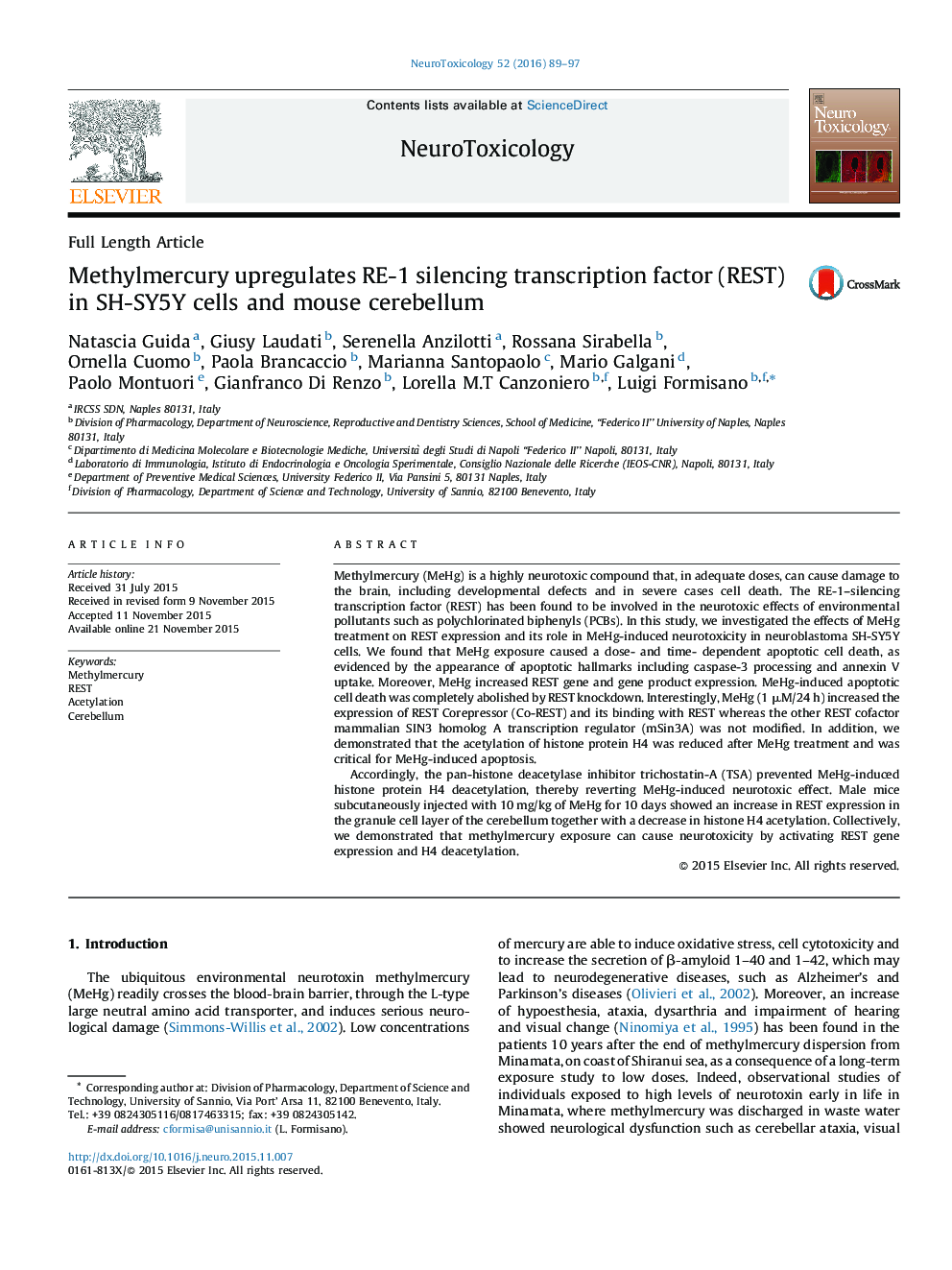| کد مقاله | کد نشریه | سال انتشار | مقاله انگلیسی | نسخه تمام متن |
|---|---|---|---|---|
| 5854664 | 1562042 | 2016 | 9 صفحه PDF | دانلود رایگان |

- MeHg induced apoptotic but not necrotic cell death in SH-SY5Y cells.
- MeHg induced apoptotic cell death is determined by REST overexpression.
- TSA reverted MeHg-induced cell death.
- MeHg determined an increase of REST expression in the granule cell layer of the cerebellum together with a decrease in histone H4 acetylation.
Methylmercury (MeHg) is a highly neurotoxic compound that, in adequate doses, can cause damage to the brain, including developmental defects and in severe cases cell death. The RE-1-silencing transcription factor (REST) has been found to be involved in the neurotoxic effects of environmental pollutants such as polychlorinated biphenyls (PCBs). In this study, we investigated the effects of MeHg treatment on REST expression and its role in MeHg-induced neurotoxicity in neuroblastoma SH-SY5Y cells. We found that MeHg exposure caused a dose- and time- dependent apoptotic cell death, as evidenced by the appearance of apoptotic hallmarks including caspase-3 processing and annexin V uptake. Moreover, MeHg increased REST gene and gene product expression. MeHg-induced apoptotic cell death was completely abolished by REST knockdown. Interestingly, MeHg (1 μM/24 h) increased the expression of REST Corepressor (Co-REST) and its binding with REST whereas the other REST cofactor mammalian SIN3 homolog A transcription regulator (mSin3A) was not modified. In addition, we demonstrated that the acetylation of histone protein H4 was reduced after MeHg treatment and was critical for MeHg-induced apoptosis.Accordingly, the pan-histone deacetylase inhibitor trichostatin-A (TSA) prevented MeHg-induced histone protein H4 deacetylation, thereby reverting MeHg-induced neurotoxic effect. Male mice subcutaneously injected with 10 mg/kg of MeHg for 10 days showed an increase in REST expression in the granule cell layer of the cerebellum together with a decrease in histone H4 acetylation. Collectively, we demonstrated that methylmercury exposure can cause neurotoxicity by activating REST gene expression and H4 deacetylation.
Journal: NeuroToxicology - Volume 52, January 2016, Pages 89-97